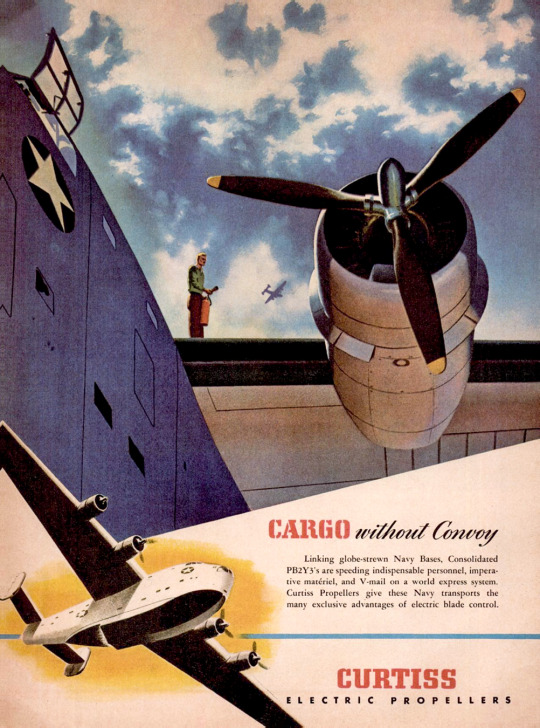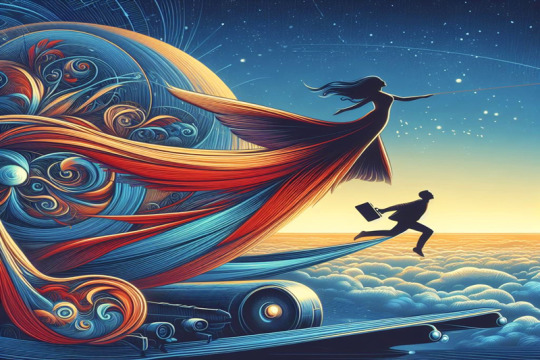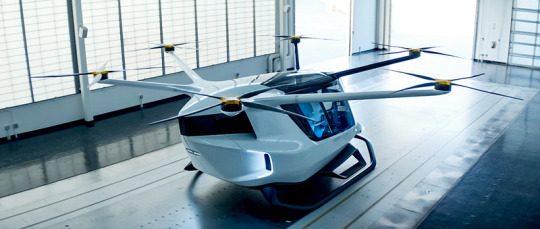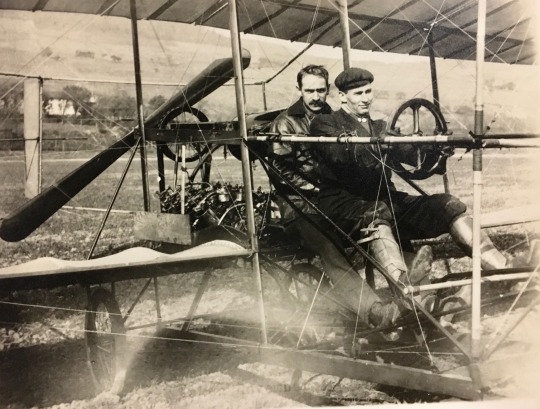#glenn curtiss
Explore tagged Tumblr posts
Text

Cargo without convoy.
#vintage advertising#wartime ads#wwii#ww2#ww#life during wartime#vintage aircraft#ww2 aircraft#warplanes#vintage illustration#curtiss#consolidated pb2y3#curtiss-wright#glenn curtiss
37 notes
·
View notes
Text

Wednesday, November 22, 2023
I enjoy the quiet here in the mornings before we open to the public.
9 notes
·
View notes
Text

The #CurtissJN "#Jenny" is a series of biplanes built by the #GlennCurtiss Aeroplane Company of Hammon
0 notes
Text

US 1973 8¢ "LOVE" by Robert Indiana US 2017 10¢ Pears US 1980 35¢ Glenn Curtiss (1878 - 1930), aircraft designer
#us#usa#1970s#2010s#1980s#robert indiana#glenn curtiss#love#pears#fruit#people#aviation#stamp#stamps#philately#stamp collection#snail mail#postage#postage stamp#usps#on postcard
0 notes
Text







Demain, c'est mon dernier cours de français. Dans quelques jours, je reprends l'avion pour mon pays natal. J'ai l'impression que c'était hier que je franchissais ces murs pour la première fois,emportant rêves, peurs et espoirs dans mon sac à dos. Je me tiens maintenant au seuil d'une nouvelle étape, tenant entre mes mains tout un univers de souvenirs.
À Washington, D.C., nous avons tout essayé : déambuler dans les musées, puiser dans l'inspiration, capturer chaque goutte de savoir. Je me souviens avoir goûté une simple glace de rue – presque banale, mais sur le moment, elle avait un goût de liberté et de rêve. L'une de nos visites était une exposition avec une citation au mur de Glenn Curtiss, un pionnier de l'aviation : « À quoi bon courir si on ne s'attend pas à gagner ? » Ces mots ont profondément marqué mon esprit. Un rappel discret : chaque pas en avant doit être porteur de la foi en la victoire. Je me souviens des matins pressés pour aller en classe. Des soirées interminables à la bibliothèque. Les rires résonnent dans les couloirs. Les gens qui m'ont soutenu – avec qui j'ai rêvé, trébuché, appris, et qui sont peu à peu devenus une sorte de famille. Je me souviens des moments où j'ai voulu abandonner, et de ceux où mon cœur s'est envolé de joie. Les petites victoires. Les conversations nocturnes sous le doux murmure de l'incertitude. Ce n'étaient pas seulement quatre mois, c'était toute une vie en miniature, un chapitre où je suis devenue qui je suis.
Plus tard, nous avons pique-niqué entre le Monument et le Capitole. L'herbe douce sous nos pieds, la brise qui tirait doucement sur nos manches. Nous avons ri, nous souvenant de tout ce que nous avions vécu. Et puis vint le silence – quand nous avons regardé autour de nous et avons su : c'est notre dernier voyage ensemble. Les larmes coulaient facilement – des larmes de tristesse que cela se termine, et de fierté pour le chemin parcouru. Nous sommes des étudiants de continents différents, d'histoires différentes, de rêves différents — et pourtant, à cet instant, nous ne faisions qu'un. Nous avons traversé des océans, des doutes, des peurs — tout cela pour ce rêve.
Merci — pour tout. Dire au revoir est douloureux. Mais j'emporte avec moi ce qu'il y a de plus précieux : les gens, les souvenirs et la confiance en moi.
Demain, c'est le dernier cours de français. La dernière page de ce beau livre. Mais l'histoire est loin d'être terminée — ce n'est que le début. P.S. J'exprime ma sincère gratitude à mon professeur de français, quelqu'un qui ne s'est pas contenté de nous enseigner un languemais quifait de chaque cours un lieu sûr et inspirant. Il nous a non seulement enseigné une nouvelle langue avec beaucoup de compétence et de dévouement, mais il m'a aussi soutenu, encouragé et motivé quand j'en avais le plus besoin. Tu as un grand cœur et une âme généreuse ; un véritable modèle. Tu as laissé une belle empreinte sur mon parcours en Amérique, et je t'en serai toujours reconnaissant. Merci beaucoup, du fond du cœur.
9 notes
·
View notes
Text
More Than A Daredevil, Ruth Neely Paved The Way For Cincinnati’s Women Journalists
When Ruth Neely France died in 1956 Cincinnati’s ink-stained wretches tumbled all over themselves to effusively memorialize Neely’s non-nonsense style and her outrageous adventures in the quest for a front-page headline. Some of the anecdotes were actually true. A few would have brought a smile to Neely’s face. In her day, she was not above a dash of hyperbole to keep her readers entranced.
Did she really climb to the top of the Suspension Bridge? Pilot a dirigible? Slide down a pocket fire escape from the tallest building in town? Yes, Ruth Neely did all this and more.
The daughter of an attorney, Neely was born in Kentucky around 1875, received an unusually thorough education for a woman at that time and taught in the Covington schools for several years. One day, she walked into the offices of the old Cincinnati Commercial Tribune and talked herself into an unpaid quasi-internship ferreting out bits of neighborhood news. Within a few months, the editor offered her a full-time position.
Neely was not the first woman hired by Cincinnati newspapers. A bevy of mostly unsigned scribes had compiled the society columns for decades prior and the Commercial Tribune’s competitor, the Cincinnati Post, already had a powerhouse “girl reporter” in Jessie M. Partlon. Neely’s influence, however, was unmatched and she was a force to be reckoned with for more than half a century.
As Miss Partlon discovered at the Post, newspapers considered women suitable for only two assignments – social tidbits or stunts. Miss Neely (she employed her birth name throughout her career even after marrying traveling salesman William France in 1912) dove into the latter role, quickly gaining a reputation as a dauntless daredevil.

Cincinnati was enthralled by a 1909 air show out at the Latonia racetrack. Glenn Curtiss was there, buzzing the grandstands while demonstrating maneuvers. So was Cromwell Dixon, a 17-year-old aeronaut with his motor-powered dirigible. All of the other aircraft were one-seater biplanes of various makes, requiring a great deal of skill and mechanical aptitude to fly. Cromwell Dixon’s dirigible was little more than a floating rowboat with a bamboo seat. Neely hopped aboard and drifted upward and out over a lake. She wrote:
“Not more than a decade ago I skated on the same lake. If, at that time, I had glanced upward and said to my companion, ‘Look, there goes a woman in an airship,’ I am sure he would have thought me mad. Yet it is but 10 years.”
Neely’s stunts gained her fame but exasperated her family and friends. She was undercover, investigating conditions in the women’s wing of the Cincinnati Workhouse, when a delegation from the Woman’s City Club arrived for a tour. According to the Cincinnati Post [9 September 1999]:
“The visitors were pleased to find the inmates in good condition and spirits – particularly one in a freshly laundered uniform ‘smiling smugly’ at them. When the club women realized who she was, they stared at each other in horrified consternation until one blurted out: ‘Mrs. Ross, it's your sister! It's Ruth!’ Mrs. Ross is said to have replied: ‘Good heavens! What on earth has she done now?’”
Among Neely’s other feats, she was the first woman in America to fly in an Army airplane to promote an enlistment drive. She climbed to the highest point on the Roebling Suspension Bridge for an interview with a worker repairing the span. He was startled but answered her questions.
Every report of Neely’s career dutifully mentioned the time she slid 34 stories from the top of the Union Central Tower, the tallest building in Cincinnati at that time, on a “wire fire escape contraption.” Well, not exactly.
Pietro “Peter” Vescovi traveled the country in 1914, demonstrating a “pocket fire escape” of his own invention, consisting of a spool of steel tape. His routine varied little from town to town. Vescovi found the tallest building in that particular burg, announced to the local newspapers that he would safely descend from the roof to the sidewalk, and collected headlines and sales. In Cincinnati, the brand-new Union Central Tower fit the bill. It was, at the time, the tallest building outside New York City.
On Friday, 30 January 1914, Vescovi stepped off a ledge on the fourth story of the Union Central Tower and glided to the pavement. Watching from the ground, Ruth Neely asked if she could give the apparatus a try. With an eye toward her own headlines, she suggested a higher launching point, so Vescovi led her to the 21st story. Fastening his steel spool to the window sill, Vescovi and Neely both stepped into space. She reported:
“We swung, swayed by the wind, slightly to eastward, affording just one hideous glimpse of the Vine street canyon. Then the breeze veered, whisking us, its plaything, westward ho. A huge mass of nothingness was disclosed, attached neatly to a bank of clouds. I closed my eyes.”
The pair alighted on the roof at the 17th floor. Neely insisting that she had clung to the unusual device so fervidly that her thumbprint dented a steel buckle on Vescovi’s harness.
Neely later flew around Cincinnati in an autogiro piloted by Amelia Earhart, and dropped her report of that flight onto the roof of the Cincinnati Post as the famed aviatrix buzzed the building.
After three decades at the newspapers, covering everything from gardening to political conventions, Neely spent a year writing and editing the three-volume “Women of Ohio,” including biographies of 1,200 women overlooked in the history books. She was an early member of the Women’s City Club, was instrumental in organizing the Cincinnati Peace League and participated in the local chapter of the Foreign Policy Association. A plaque at the Hamilton County Courthouse lists her as one of the women responsible for gaining women the vote. On her death, her good friend, Post columnist Al “Cincinnatus” Segal, opined:
“She was not the first woman, of course, to be a ‘regular reporter’ on a daily newspaper. But she had to prove, to many a skeptical male in the business, that she could use her wits and courage and come back with her story. She won her place, her journeyman’s rating, the hard way and she helped pave the way for the many women who followed her into city rooms since the early years of the century.”

12 notes
·
View notes
Text
Birthdays 5.21
Beer Birthdays
Frederick Kirschner (1856)
Nick Matt (1945)
Five Favorite Birthdays
Albrecht Durer; artist (1471)
Plato; Greek philosopher (428 B.C.E.)
Judge Reinhold; actor (1957)
Marc Ribot; rock guitarist (1954)
Henri Rousseau; French artist (1844)
Famous Birthdays
Fairuza Balk; actor (1974)
Bill Barber; jazz tubaist (1920)
Mike Barson; rock keyboardist (1958)
Raymond Burr; actor (1917)
Peggy Cass; comedian (1924)
Nick Cassavetes; actor (1959)
Bill Champlin; rock guitarist, singer (1947)
Glenn Curtiss; inventor, aviation pioneer (1878)
Al Franken; comedian, writer, actor (1951)
Josh Hamilton; Texas Rangers OF (1981)
Armand Hammer; industrialist (1898)
Robert Hatch; actor (1945)
Ronald Isley; singer (1941)
Dorsey Levens; Green Bay Packers RB (1970)
Marie McCray; porn actor (1985)
Robert Montgomery; actor (1904)
Notorious B.I.G.; rapper (1972)
Alexander Pope; English writer (1688)
Harold Robbins; writer (1916)
Andrei Sakharov; Russian physicist (1921)
Leo Sayer; actor (1948)
Biggie Smalls; rapper (1972)
Mr. T; actor (1952)
Fats Waller; jazz pianist (1904)
3 notes
·
View notes
Text
El sueño de volar
Los sueños de volar algún día se harán realidad con los vehículos aéreos eléctricos de pasajeros. Desde Ícaro desafiando al sol con alas de cera hasta los Wright elevándose sobre Kitty Hawk, la humanidad ha estado obsesionada con surcar los cielos. Ahora, disruptivas startups prometen llevar esa fantasía a nuestras ciudades con taxis aéreos autónomos. Pero mientras visionarios como Lilium y Joby Aviation buscan que despeguemos hacia los suburbios, los autos eléctricos terrestres como los de Tesla ya recorren velozmente las carreteras. ¿Podrán los vehículos voladores personales sortear obstáculos regulatorios y de infraestructura para materializar su potencial? ¿O el futuro de la movilidad eléctrica seguirá atado al asfalto? Revisemos el panorama.

Los humanos han soñado con volar desde la antigüedad. Los primeros esfuerzos se centraron en emular el vuelo de las aves con alas artificiales. En el siglo IX, Abbas Ibn Firnas construyó unas alas rudimentarias y se lanzó desde una torre, planeando brevemente. En el Renacimiento, Leonardo Da Vinci diseñó varios prototipos de máquinas voladoras. Pero no fue hasta finales del siglo XVIII que los hermanos Montgolfier inventaron el globo aerostático, demostrando por primera vez que el vuelo era posible.
A mediados del siglo XIX, Sir George Cayley sentó las bases de la aerodinámica moderna al identificar las cuatro fuerzas que actúan sobre un avión. A principios del siglo 20, los inventores comenzaron a experimentar con autos voladores y aeronaves híbridas tierra-aire. En 1903, los hermanos Wright lograron el primer vuelo propulsado y controlado en un avión más pesado que el aire. La Primera Guerra Mundial vio grandes avances en el diseño de aviones. En 1917, Glenn Curtiss desarrolló el Autoplane, considerado uno de los primeros diseños viables de un auto volador. En 1927, Charles Lindbergh cruzó el Atlántico en un vuelo transoceánico sin escalas.
En la década de 1930, Waldo Waterman creó varios prototipos exitosos de autos voladores que realizaron breves vuelos. Después, la Segunda Guerra Mundial trajo aviones a reacción y cohetes. Sin embargo, la tecnología y los materiales de la época limitaron el desarrollo en gran escala. La Segunda Guerra Mundial y la Guerra Fría desviaron los recursos e intereses hacia jets de combate y cohetes. No fue hasta la década de 1950 que nuevos intentos como el ConvAirCar Model 118 y el Aerocar Aero-Plane tuvieron algo de éxito, aunque eran complejos de operar. En 1969 el Apolo 11 aterrizó en la luna.
En la década de 1980, la Administración Federal de Aviación de EE. UU. estableció estándares de seguridad para vehículos de despegue y aterrizaje vertical. Esto renovó el interés y allanó el camino para desarrollos posteriores. Modelos notables de fines del siglo XX fueron el Avcen Jet Flying Car y el Moller Skycar M400. Sin embargo, los altos costos, la compleja logística y las limitaciones persistentes de almacenamiento de energía evitaron una adopción generalizada.

Ahora en las dos primeras décadas del siglo 21 hemos visto grandes avances en vehículos aéreos eléctricos para transporte urbano y regional. Compañías como Lilium, Joby Aviation y Archer Aviation están desarrollando taxis aéreos y vehículos de despegue y aterrizaje vertical eléctricos (eVTOLs) para viajes punto a punto más rápidos y sostenibles.
En 2006, el avión transitable PAL-V Liberty obtuvo la certificación de la Unión Europea para operar tanto en carreteras como en cielos. Otros como Terrafugia Transition están siguiendo un enfoque híbrido terra-aire. Mientras tanto, AeroMobil ha presentado prototipos de automóviles voladores de alta velocidad para 4 pasajeros.
China ha establecido una hoja de ruta ambiciosa para tener vehículos aéreos operativos masivamente en 2025. Compañías respaldadas como EHang ya tienen taxis aéreos autónomos funcionando en pruebas. Por otro lado, AirBus, Hyundai y Uber planean lanzar servicios aéreos urbanos en la próxima década. Con la electrificación, la autonomía y las asociaciones intersectoriales, es probable que veamos los vehículos voladores tripulados convertirse en una realidad común en los próximos años.
La compañía alemana Volocopter tiene el volador eléctrico Volocity, diseñado para trasladar 2 pasajeros sobre el entorno urbano sin necesidad de infraestructura adicional. Lilium, también alemana, trabaja en una aeronave eléctrica de despegue y aterrizaje vertical capaz de transportar a 4 pasajeros. En Estados Unidos, Joby Aviation construye el taxi aéreo eléctrico S4 con 4 plazas, ideal para entornos suburbanos.

Skai Alaka'i Technologies Hopkinton, Massachusetts, USA. www.skai.co
Se pronostica que este nicho alcanzará 580 mil vehículos anuales en 2040. Empresas como Alaka'i y JetPack Aviation desarrollan prototipos de jets personales compactos impulsados por hidrógeno. La visión futura es que estos vehículos puedan estar al alcance de cualquier persona interesada en experiencias de vuelo personalizadas e innovadoras.
A pesar del entusiasmo por los vehículos aéreos eléctricos de pasajeros, su adopción masiva enfrenta desafíos. Los autos eléctricos terrestres ya tienen una infraestructura establecida de carriles, estaciones de carga y cadenas de suministro. La movilidad aérea urbana, por otro lado, debe resolver complejos rompecabezas regulatorios, de espacio aéreo, ruido y seguridad antes de materializarse.
El futuro de la movilidad aérea personalizada está despegando. Con innovadores vehículos eléctricos de despegue y aterrizaje vertical que transportan de 1 a 4 pasajeros, empresas visionarias lideran una revolución silenciosa y sostenible. Libres como pájaros, pronto cruzaremos ciudades abarrotadas pilotando nuestros propios taxis aéreos. El cielo es el límite para esta nueva era dorada de aviación personal.
¡Agárrate!
Gracias por leerme y compartir
@ptorresmx

2 notes
·
View notes
Text
If I’m not very mistaken, this biplane was the first tractor design produced by Glenn L. Martin. It was built to take part in the Great Lakes Reliability Cruise on July 4, 1913 where with Martin himself at the helm it failed to finish. Also known as the “Aero Yacht”, this biplane had a 80hp Curtiss and was designed to carry a pilot and three passenger.
0 notes
Text

Friday, December 8, 2023
The Silver Dart (1908-09), the fourth aerodrome designed by the Aerial Experiment Association, was originally built to carry two men. In the same seat. After AEA member Lt. Thomas Selfridge’s death in an airplane crash as a passenger with Orville Wright as pilot, Alexander Graham Bell essentially forbid his organization’s machines from carrying two people. The photo above shows Glenn Curtiss and Doug McCurdy in the Silver Dart.
4 notes
·
View notes
Link
The Glenn H. Curtiss Museum in Hammondsport, New York, honors the memory of an aviation pioneer. Much more than a leader in flight, Curtiss began innovation on bicycles, leading to motorcycles and then airplanes. The museum is filled with just about every form of transportation mankind has used and tells not only Curtiss’s story but also the Hammondsport/Steuben County history of transportation.
0 notes
Text

The Curtiss JN "Jenny" is a series of biplanes built by the Glenn Curtiss Aeroplane Company of Hammondsport, New York, later the Curtiss Aeroplane and Motor Company. Although the Curtiss JN series was originally produced as a training aircraft for the US Army, the "#jenny" (the common nickname derived from "JN") continued after #WorldWarI as a civilian aircraft, becoming the "backbone of American postwar [civil] aviation".[1]
2 notes
·
View notes
Text
BLANCHE STUART SCOTT // AVIATOR
“She was possibly the first American woman aviator. For her automobile journey across the United States she won the attention and admiration of pioneer aviator Glenn Curtiss who gave her flying lessons at the Curtiss flying school, in Hammondsport, New York, America's first flying school.”

0 notes
Video
AL17_Warren Eaton Photo_000534 by SDASM Archives Via Flickr: From an Album (AL17) on the life of Warren Samuel Eaton who was born in South Dakota on June 12, 1891 and moved to Los Angeles as a child. He formed Eaton Brothers Aircraft with his brother Frank and they built several aircraft together. Warren teamed with Lincoln Beachy and barnstormed with him. He also built some of Beachy's airplanes. Later, he assisted Glenn Curtiss with the design of amphibian aircraft. When the U.S. Government established licensing for pilots, Warren Eaton was issued License Number 85. A short time later, at the beginning of WWI, Warren was employed by the U.S. Army Air Service at what is now Wright Patterson Air Force Base. After the war, he went to work for Universal Pictures and developed miniatures to be used in movies. He built a set of San Francisco which was used to depict the destruction of the city during the 1906 Earthquake. He also constructed a copy of the Notre Dame Cathedral used in the “Hunchback of Notre Dame” movie.Repository: San Diego Air and Space Museum Archive
#Samuel Eaton#Barnstormer#aviation#Curtiss#Aircraft#Airplane#Monoplane#Beachey-Eaton Monoplane#Gnôme#Gnome#Gnôme Monosoupape#Gnome Monosoupape#Monosoupape#Eaton#flickr
0 notes
Text
The Smithsonian Institution ("Smithsonian Institution") is an educational and research institution associated with a complex of museums, founded and administered by the United States government.
With most of its buildings located in Washington, D.C., the institute comprises 19 museums and seven research centers, and has 142 million items in its collections.
It was founded for the promotion and dissemination of knowledge by British scientist James Smithson (1765-1829). In Smithson's will, he declared that if the heir, his nephew Henry James Hungerford, died without issue, the Smithson estate should be donated to the United States government for the creation of an "establishment for the expansion and diffusion of knowledge among men". After Henry James died in 1835 without leaving heirs, President Andrew Jackson informed Congress of Smithson's estate, which consisted of 100,000 gold coins and 500,000 dollars (9,235,277 in 2005 values).
The Smithsonian Institution was then established as a trust by an act of Congress, and was functionally and legally an agency of the United States government. Part of the collection of one of its museums is the V8 motorcycle, created in 1907 by Glenn Curtiss, to establish the highest speed reached by a motorized equipment until then.
The Smithsonian complex includes 19 museums and galleries, as well as nine research centers and a number of zoos and botanical gardens. Museums house comprehensive collections covering a wide range of topics, from art and natural history to aviation and technology. The institution also carries out innovative research in several areas, contributing significantly to the advancement of scientific and cultural knowledge.
#edisonmariotti @edisonblog
.br
A Smithsonian Institution ("Instituição Smithsoniana") é uma instituição educacional e de pesquisa associada a um complexo de museus, fundada e administrada pelo governo dos Estados Unidos.
Com grande parte de seus prédios localizados em Washington, D.C., o instituto compreende 19 museus e sete centros de pesquisa, e tem 142 milhões de itens em suas coleções.
Foi fundado para a promoção e disseminação de conhecimento pelo cientista britânico James Smithson (1765-1829). No testamento de Smithson, ele declarou que se o herdeiro, seu sobrinho Henry James Hungerford, morresse sem deixar descendentes, o patrimônio dos Smithson deveria ser doado ao governo dos Estados Unidos para a criação de um "estabelecimento para a expansão e difusão de conhecimento entre os homens". Após Henry James morrer em 1835 sem deixar herdeiros, o presidente Andrew Jackson informou o Congresso do patrimônio de Smithson, que consistia de 100 000 moedas de ouro e 500 000 dólares (9 235 277 em valores de 2005).
O Instituto Smithsoniano foi então estabelecido como um truste por uma lei do Congresso, sendo funcional e legalmente um órgão do governo dos Estados Unidos. Faz parte do acervo de um dos seus museus, a motocicleta V8, criada em 1907 por Glenn Curtiss, para estabelecer a maior velocidade atingida por um equipamento motorizado até então.
O complexo da Smithsonian inclui 19 museus e galerias, além de nove centros de pesquisa e uma série de zoológicos e jardins botânicos. Os museus abrigam coleções abrangentes que cobrem uma ampla gama de temas, desde arte e história natural até aviação e tecnologia. A instituição também realiza pesquisas inovadoras em diversas áreas, contribuindo significativamente para o avanço do conhecimento científico e cultural.

0 notes





